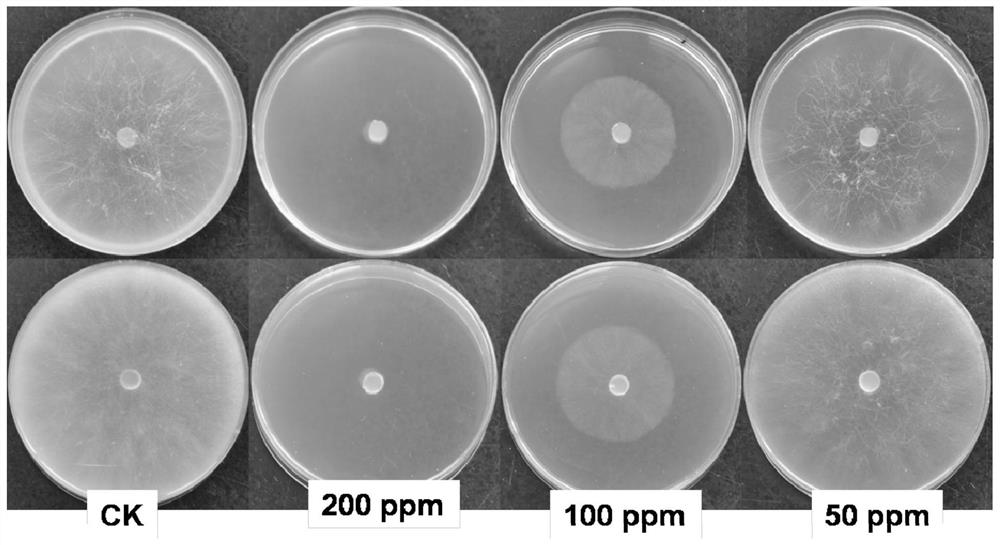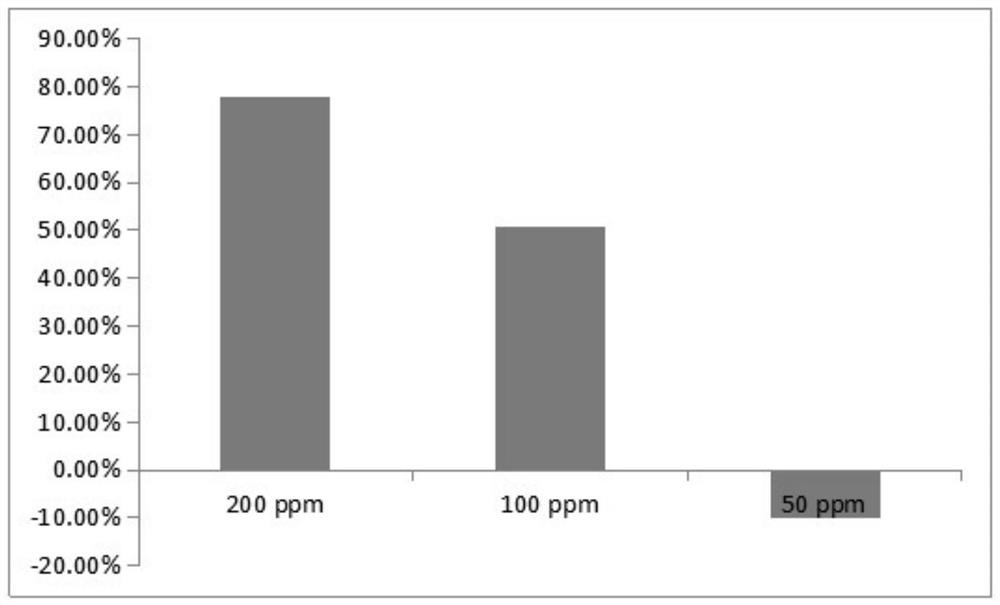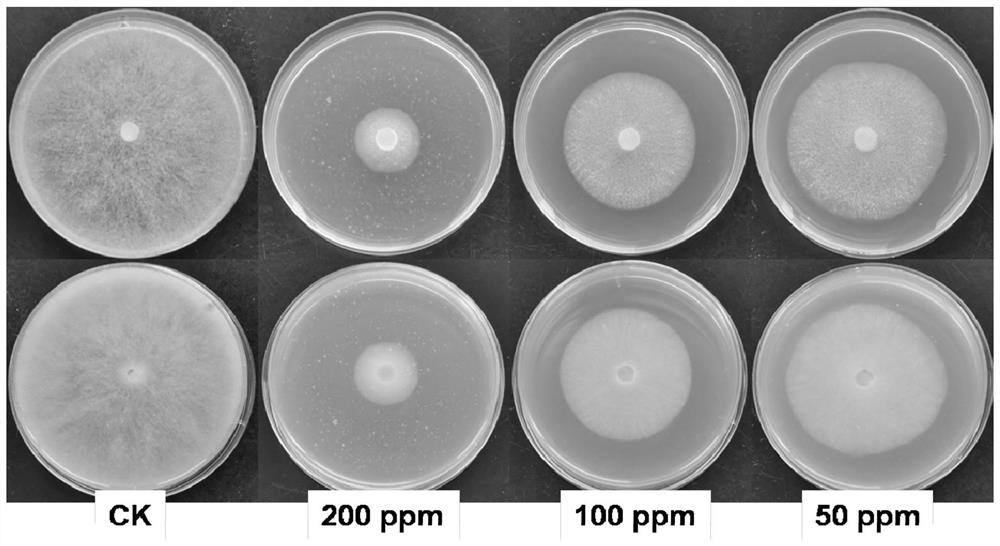Functional components of cymbopogon distans volatile oil and application thereof
A technology of rue vanilla and volatile oil, applied in applications, chemicals for biological control, animal repellents, etc., can solve problems such as pollution and affecting the quality of edible fungi
- Summary
- Abstract
- Description
- Claims
- Application Information
AI Technical Summary
Problems solved by technology
Method used
Image
Examples
Embodiment 1
[0042] Pathogenic fungi tested: Aspergillus flavus, Rhizopus stolonifer, Mucor racemosus, Trichoderma viride, Colletotrichum lentis, Fusarium oxysporum Fusarium oxysporum and Phytophythora infestans.
[0043]Plants tested: rue (Cymbopogon distans), that is, a plant that is sandwiched in books to make it emit fragrance.
[0044] The preparation method of rue volatile oil is: put rue 250 grams of rue plant into a round bottom flask, add 350 g of distilled water, adopt steam distillation to collect volatile oil, the oil-water mixture collected is extracted with n-hexane, then with anhydrous sulfuric acid Sodium for drying, and finally freeze-drying with a freeze dryer to obtain volatile oil, which was stored in a 4°C refrigerator.
[0045] experimental method:
[0046] The inhibitory effect of rue volatile oil on the mycelial growth of plant pathogenic fungi was determined by the growth rate method in toxic media.
[0047] Weigh 8 mg of rue volatile oil and dissolve it with 10...
Embodiment 2
[0066] Tested fungi: Aspergillus flavus, Rhizopus stolonife, Mucor racemosus, Trichoderma viride, Colletotrichum lentis, Fusarium oxysporum (Fusarium oxysporum) and potato infestans (Phytophythora infestans).
[0067] The method for detecting the antibacterial activity of plant volatile oil and main compounds is as follows:
[0068] The colony diameter of the mycelia of the seven plant pathogenic bacteria under each treatment was tested in a criss-cross manner, and the smaller the value of the diameter, the stronger the inhibitory activity.
[0069] The preparation process of the compound 1-4 for testing is as follows, the obtained rue grass volatile oil is passed through silica gel column chromatography, according to normal hexane and ethyl acetate (volume ratio is successively 100:0, 50:1, 20:1, 10:1, 8:1, 4:1, 2:1, 1:1, 0:1) for gradient elution to obtain Fr.1-Fr.9 fractions respectively.
[0070] Part FR.2 was chromatographed on a silica gel column (petroleum ether and d...
PUM
 Login to View More
Login to View More Abstract
Description
Claims
Application Information
 Login to View More
Login to View More - R&D
- Intellectual Property
- Life Sciences
- Materials
- Tech Scout
- Unparalleled Data Quality
- Higher Quality Content
- 60% Fewer Hallucinations
Browse by: Latest US Patents, China's latest patents, Technical Efficacy Thesaurus, Application Domain, Technology Topic, Popular Technical Reports.
© 2025 PatSnap. All rights reserved.Legal|Privacy policy|Modern Slavery Act Transparency Statement|Sitemap|About US| Contact US: help@patsnap.com



